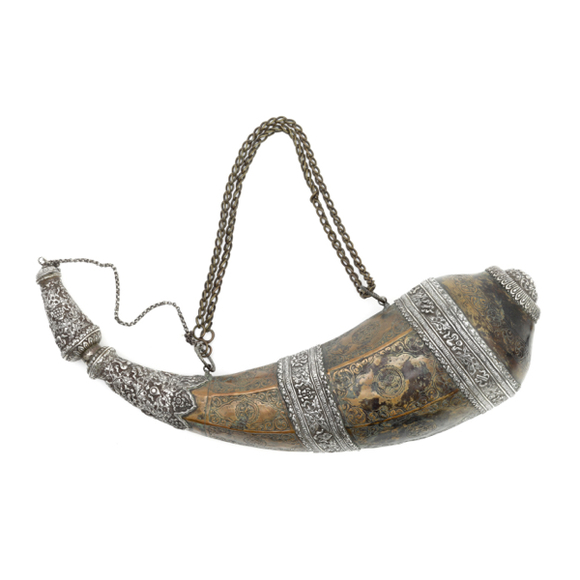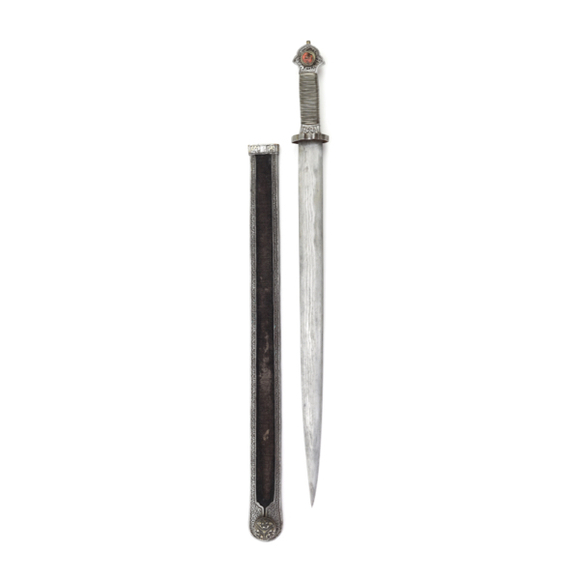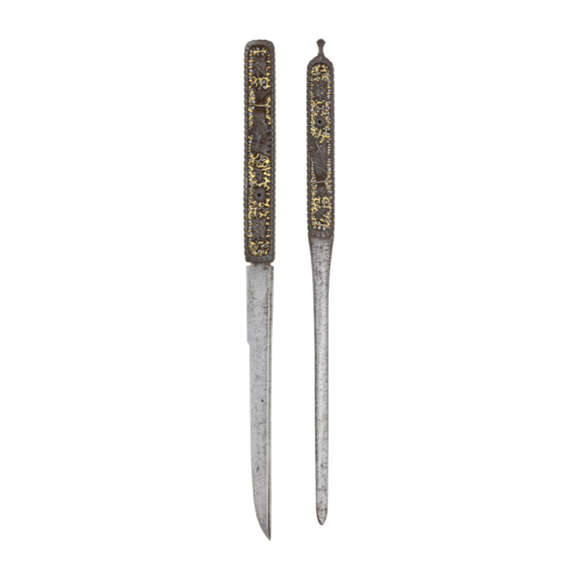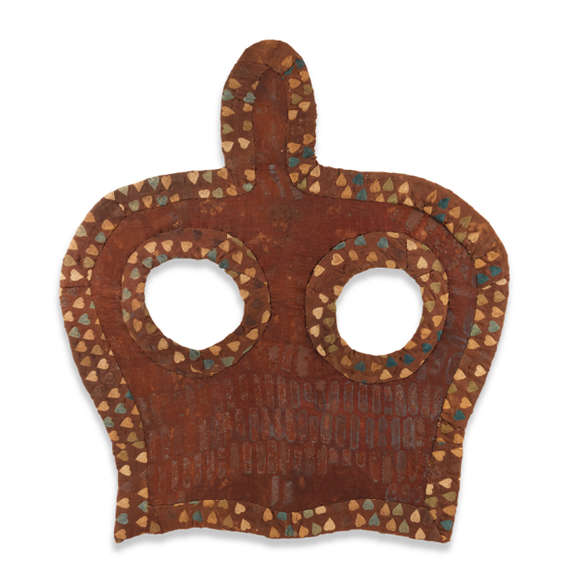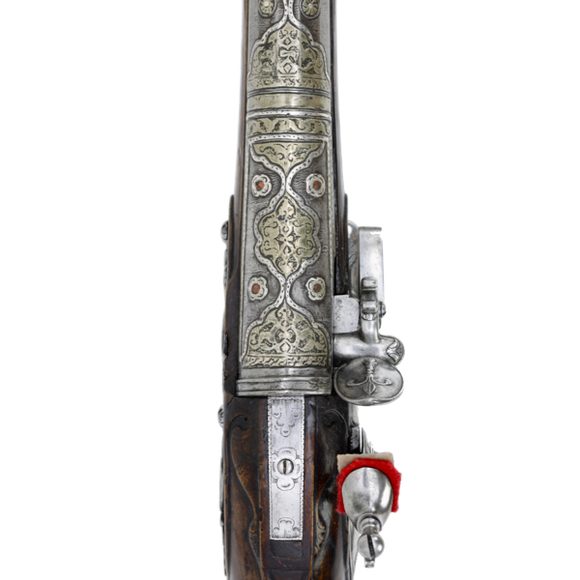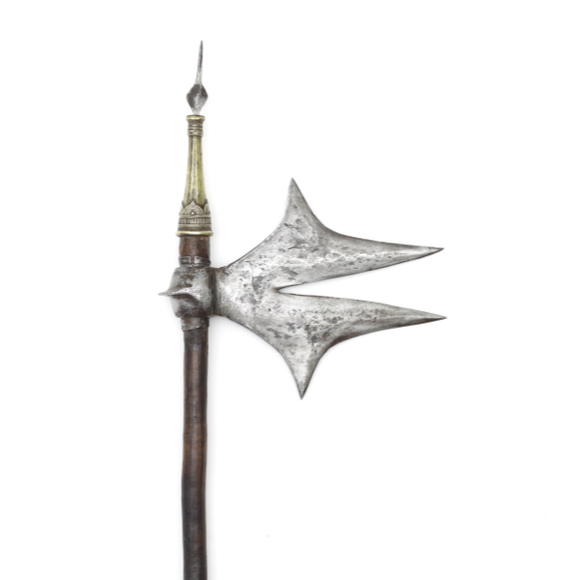Such work was made in the Royal workshops of Lhasa.

Front plate 380 x 265 x 9 mm
Back plate 390 x 235 x 9 mm
Front plate 252 grams
Back plate 269 grams
Iron, gold
Derge, Kham, Eastern Tibet
15th-16th century
Description
A set of finely pierced iron saddle bows. Each consists of a frame with stylized water borders, the center pierced and chiseled with scrollwork. Among the scrollwork are in the center of each piece a Kīrtimukha (कीर्तिमुख) or "face of glory". On either side of the Kīrtimukha appear a dragon, two deer, and a set of three flaming gems each.
The designs are very finely executed and were once damascened in gold, now mostly lost. The crosshatching to which the gold is attached is very fine, and in three directions, something seen only on a small number of fine Tibetan pierced metalwork items.
Symbolism
Kīrtimukha is a mythical monster that Shiva created to devour a demon, Rahu. By the time Kīrtimukha was conjured, however, peace was settled upon which left a very hungry demon. Shiva then ordered it to eat its own body, which it did until only the head remained.
Kīrtimukha then became a symbol of devouring evil, and it adorns many a temple gate throughout Asia. On a deeper level, Joseph Campbell described it as the "epitomization of the self-consuming mystery that is life".
-Joseph Campbell; "The Mythical Image", MJF Books, New York, 1974. Pages 118 - 130
The deer symbolize peace, harmony, and longevity. Deer feature in many of the stories of the previous lives of the Buddha.
Dragons are generally wise and benevolent and their depiction in art can have several meanings. Among others they are producers of rain and thus associated with fertility. They are also a powerful royal symbol in Bhutanese, Tibetan, Mongolian and Chinese culture.
Origin & dating
Fine metalwork of this type was primarily produced at Derge in the northern part of Kham, Eastern Tibet. The style of the tendrils and dragons is similar to work attributed to the 15th century, like the door mounts of Sera Monastery, made 1419 A.D.1
Also compare to a cup case in the Victoria & Albert Museum, accession number IM.162-1913. The cup case also has the same stylized waves border, and identical dragon heads.

Cup case from Derge, 16th-17th century.
Victoria & Albert Museum, accession number IM.162-1913.
Notes
1. Donald Larocca; Warriors of the Himalayas; Rediscovering the Arms and Armor of Tibet. The Metropolitan Museum of Art, New York. Yale University Press, New Haven and London. Page 28.
















The only set of its type known to me in both private and museum collections.
Silk horse mask from the Xianbei ruled dynasty which ruled northern China from 386 to 534 A.D.

